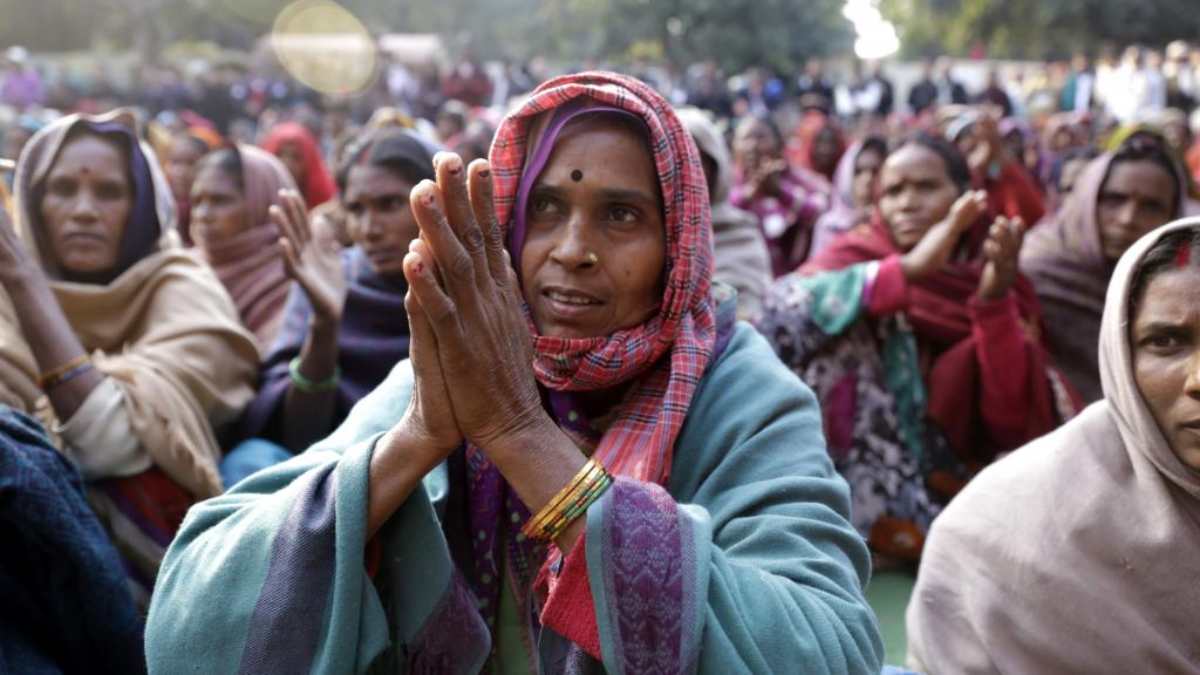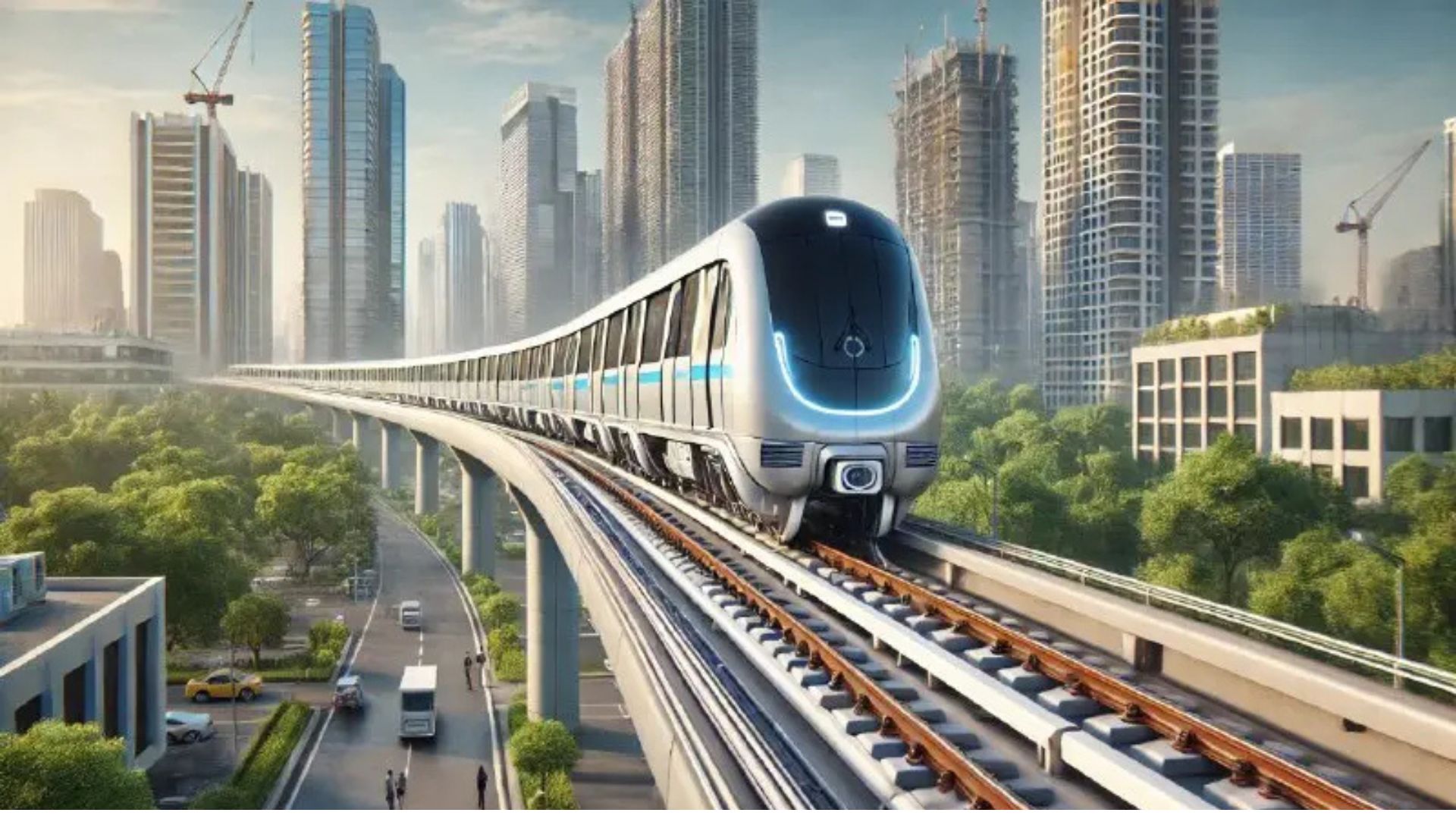
SCHEME OF RESERVATION FOR THE ECONOMIC WEAKER SECTIONS
On 9th January 2019, the Parliament of India enacted the Constitution (103rd Amendment Act,2019) and authorized the State to make reservations in higher education and affairs of Public Employment solely on the basis of economy. The act amended Article 15 and 16 of the Constitution by inserting 15(6) and 16(6). The act received presidential approval on January 12, 2019 and was issued in the Gazette the same day. The amendment was made to provide for 10% reservation to the citizens, belonging to the Economic Weaker Section (EWS) category. The reservation to the EWS category was provided without touching upon the existing scheme of reservation for the backward classes which include Scheduled Castes (SCs), Scheduled Tribes (STs) and Other Backward Classes (OBCs).
As per the new amendment Article 15(6) enables the State to make special provision for the growth of economically weaker section of the society, including reservation in educational institutions. It states that such reservation can be made in any education institutional togerwith aided and unaided private institutions, excluding minority educational institutions covered under Article 30(1)
Under Article 15(6)(a), the benefits of the EWS reservation, were extended only to the candidates belonging to General category which were, prior to the said amendment, not covered by the existing scheme for reservation. This reservation to the economically backward classes is based upon the concept of social backwardness.
Furthermore, vide Article 15(6)(b), provision was made for reserving 10% seats for EWS category in Central Government Educational Institutions and private educational institutes, both aided and unaided, with the exception of minority educational institutions under Article 30. This 10% ceiling is individualistic of the ceilings on subsisting reservations. However, an amendment to the Article 16 granted 10% reservation to the citizens belonging to EWS category in services under the State.
n services under the State. In 1980, the Mandal Commission Report, accompanied the Supreme Court judgment in the Indra Sawhney v. Union of India case did not allow more than 50% of seats in the educational and service matter for SC, ST and OBC who add up to 70% of the total population of the country. This lead to substantial development in their status; according to the data given by the Planning Commission between 2004-2005 and 2011-2012, more people amidst the underprivileged society-SC,ST, OBC- were lead over and above the poverty line, compared to the other sectors of the classes in society. Consequently, it became an important for the legislature to structure policies in a way that it uplifts the economically weaker section of the society who belonged to the General category. To safeguard this the legislature passed the Constitution 103rd Amendment Act, to give 10% reservation in job and education sector to the economically weaker section in general category.
GROUNDS OF CONTENTION
i. Economic criteria cannot be the sole basis, but one of the grounds, for granting the reservation
It is argued that the income and wealth of the citizen cannot be the only basis upon which seats can be reserved for individuals falling below a certain economic threshold.
One of the various contentions raised against the Act was that it set up reservation on the footing of economic standard. But if we take a look into the Constitutional Assembly Debates relating to the first Amendment Act, 1951, concerning to addition of Article 15(4) it is obvious that the explanation of backwardness in the Article 15(4) was contemplated to be alike Article 340(1). That is why the word “economically” did not find a position in Article 15(4) although many members pointed out that in the discerning of socially and educationally backward classes, economic backwardness could not be disregarded
In Youth for Equality V. Union of India, Gopal Sankarnarayanan, counsel for the petitioner Youth for Equality, contended that the 103rd Amendment raises different challenges- such as making reservation on economic ground only, and perhaps violating equality for excluding SC and ST. Later, he clarified that he will only challenge the amendment on the grounds that it exceeds the 50% ceiling limit as 50% limit is the fundamental in the right to equality and is a basic feature of the Constitution. He pointed out two important issues,
a. There is a difference between the determination of income for creamy layer exclusion and EWS inclusion leaves many members of the Sc, ST, OBC communities neglected.
b. Minority private educational institutions continue to be exempted from all such reservations obligation, including the 25% reservation for children from lower background under Articles 21A of the Constitution.
To which J. Bobde urged to not meld the issue of EWS reservations with minority status by assuming that the poor can belong to all communities. Determining the existence of a mandatory 50% limit on reservation was a substantial question of law.
Attorney General KK Venugopal argued that the 50% limit on reservation is not mandatory as said in Indra Sawhney v. Union of India . He further contended that the rsercation based on economic criteria alone has already been held valid in a binding judgment of the cour, Society for Unaided Private Schools of Rajasthan v. Union of India. A welfare with thepopulation od 200 M poor people, Indian State had an obligation to give effect to the Preamble’s objectives of economic justice and equality of opportunity, as well as Article 45,46 in the Directive Principles of State Policy. He further added there was no reason to refer the matter to a larger bench as every matter of grave effect on Article 14 has already been settled by the Supreme Court. The amendment provided 10% reservation for the poor among the 50% that is not covered by reservation. He also said that it was government’s constitutional duty to uplift the poor by providing education to them.
In K.C. Vasanth Kumar v. State of Karnataka, Supreme Court talks about the traits of backward classes. It was done on the appeal of Karnataka Government, who wanted the Court to lay guidelines for the dispense of the task of the Commission which was to be set up for the same. However, all the Judges gave varying opinion on this compound question. Nevertheless, on an adjacent look at the judgment it is noticed that all the Judges concur upon one point that economic basis is the principal factor for determining backward classes. Justice Chandarchud underlined two tests that should be applied for spotting backward classes.
a. They should be similar to the Scheduled Caste and Scheduled Tribe in the matter of their backwardness;
b. They should fulfil the means test which is the test of economic backwardness, given by the State Government in the circumstances of the prevalent economic backwardness.
Similarly, Desai J., held that the only criteria which can be sensibly conceived is one of the economic backwardness.
In Indra Sawhney Case, Justice R. Sahai noticed that individuals among the group, who may have attained a social status, should be disqualified to claim reservation. Hence, it can be noticed that either through judicial proclamation or by citing Constitutional Assembly Debates, which verifies the fact that reservations were meant to elevate the people economically. This is additionally explained by referring to the extract of the first two Backward Classes Commissions:
a. The First Backward Classes Commission (Kalelkar Commission)
b. The Central Government appointed a Backward Classes Commission under Article 340 of the Indian Constitution. Its main object was “to scrutinize the position of socially and educationally backward classes within the country and the deprivation under which they work and to make suggestions for the steps to be taken by the Union or any State to remove difficulties and to improve their conditions”. The Chairman of the Commission, although, after signing the report requested the President to reject it. The Chairman believed that the reservations and remedies suggested on the basis of caste should be given up altogether. Only then it would be possible to help the extreme poor and members of all the communities.
The Second Backward Classes Commission (Mandal Commission)
Chapter 7 of the Constitution and talks about the postindependence period where about 90% of higher posts under the State and seats in the medical and engineering colleges were occupied by the higher castes. Therefore, post-independence era the solution to this situation was taken with the incorporation of Article 16(4).
Eventually, the issue of determining backwardness came to light in the case of M.R. Balaji v. State of Mysore, wherein the newly inserted Article 15(4) was explored by the Supreme Court. The challenge here was a governmental order issued by Mysore, wherein backward classes were recognized solely on the basis of caste. The five-judge bench of the Supreme Court strike down the categorization on various grounds – the main amongst them is the Court’s explanation of Article 15(4) as being “classes of citizens”, not as “castes of citizens”. The test of caste was repudiated for some other reasons as well – firstly, caste is irrelevant in many sections of the society which does not acknowledge the caste system such as Muslims or Christians; secondly, the use of caste may be unsuitable if the motive is to suppress the caste itself.
Among the three dissenting opinions in Indra Sawhney case, the opinion by R.M. Sahai, J is possibly the most rational one. R.M. Sahai, J opined: Firstly, since the Constitution uses an extensive word of “class” and not “caste”, basic principles of construction says that an explanation leading to identification of backwardness on the grounds of caste ought to be rejected. Secondly, authorizing the state to make reservation under Article 16(4) on the bais of race, religion or caste would defeat the purpose and object of Article 16(2) and would account to discrimination on the basis of caste. Lastly, identification based on caste would prevent socially, educationally and economically backward members other communities from being considered as backward classes.
On these grounds, R.M. Sahai J. opined that usage of caste as the cause for determination of backwardness is constitutionally invalid and also socially and morally forbidden. He recommended a method for identification of backward classes which is based on three grounds – occupation, social acceptability and economic criteria. Kuldip Singh, J. agreed with R.M. Sahal J. and recommended for identification on the basis of secular association as opposed to caste association.
Another dissenter, Thommem, J., said that the Constitution is neither caste-blind nor caste-biased, but fully alive to caste as one of the basic standards to be computed in the process of identification of backward classes of citizens. Nevertheless, he cleared that any reservation merely with reference to caste may result to discrimination.
The Sinho Commission report of 2010, which has been quoted as the basis for its legislation to permit 10% reservation to the EWS mainly among upper castes, never clearly recommended reservation for the EWS but was only firm about confirming that the EWS gets access to all the welfare schemes in the country. The commission suggested welfare measures for the EWS comprising easy access to the existing schemes in the field of housing, healthcare, sanitation, skill development and making certain that the EWS women in General category avail jobs under NREGA and children get educational scholarship.
On the contrary, it is urged that the Parliament had passed the Constitution (One Hundred and Third Amendment) Act, 2019, after it had considering the Sinho Commission Report which had stated that there is a substantial section belonging to the unreserved category living below poverty line which is almost at par with the percentage of people belonging to the BPL category in the reserved category/Backward Class. Therefore, the EWS section of the unreserved category which is at a disadvantage for lack of resources and poverty has been denied benefits and opportunity of affirmative action since it did not belong to the BCs or SEBCs as defined by the Hon’ble Supreme Court of India in Indira Sawhney’s case.
The nine judges’ Constitution Bench in the Indra Sawhney case had also struck down Office Memorandum dated 25.9.1991 which provided for reservation of 10% of the posts in favour of other economically backward sections of the people who were not covered by any of the existing schemes of the reservations since such classification was impermissible under Article 16 (4) and there was no other provision before the present amendment to provide reservation to EWS category in the Constitution prior to Constitution (One Hundred and Third Amendment) Act, 2019. The Hon’ble Supreme Court had stated that such criterion is yet to be evolved by the Government of India. It is therefore evident that evolving economic criterion for reservation does not ipso facto entails that it violates the basic structure of the Indian Constitution. ii. Constitution 103 Amendment Act, 2019, is not in violation of the basic structure of the Constitution of India It is contended that limiting the benefits of the EWS reservations to the General category is not in violation of the Fundamental Rights guaranteed under Articles 14, 15, 16, 19 and 29 of the Constitution of India. The benefits of the affirmative action if based solely upon the economic criterion cannot be extended exclusively to the candidates belonging to General category. In such a case, all the eligible citizens below a certain economic threshold shall be made entitled to avail the benefits of the EWS reservation irrespective of their caste, class or social status.
Therefore, by inclusion of phrase “other than the classes mentioned in clauses (4) [and (5)]” in Article 15 and Article 16 and limiting the benefits of the unreserved category is manifestly arbitrary and discriminatory.
It is pertinent to mention that the Parliament is well within its rights to pass legislation towards the fulfillment of the Directive Principles of State Policy enumerated under Part IV of the Constitution. The Constitution (One Hundred and Third Amendment) Act, 2019, has been enacted “to promote with special care the educational and economic interests of the weaker sections of the people in furtherance of directive given under Article 46 of the Constitution of India.”
The Act is claimed to be violation of the basic structure of the Indian Constitution. But before going deeper into this question the basic structure doctrine has to be understood in a broader sense. Even so every provision of the Constitution is important but this does not put every provision of the Constitution in the same place. The correct position is that every provision of the Constitution can be amended on a condition that it does not alter the basic foundation and structure of the Constitution.
The definition of basic structure of constitution was first addressed in 1973, by Justice J.R. Mudholkar, in Sajjan Singh v. State of Rajasthan, It is also a matter of thought whether making a change in a basic feature of the Constitution can be regarded solely as an amendment or would it be, in effect, rewriting a part of the Constitution; and would it be within the purview of Article 368?
Furthermore, it has been held in Keshavananda Bharati v. State of Kerala that mere amendment in the provision embodying the basic feature does not ipso facto entail that the said amendment is unconstitutional so long it does not touch upon its foundations. It was observed:
“The amending procedure is concerned with the statutory framework of which it forms part itself. It may effect changes in detail, remould the legal expression of underlying principles, adapt the system to the needs of changing conditions, be in the words of Calhoun the medicatrix of the system’, but should not touch its foundations.”
The basic foundation and structure of the Constitution were mentioned by Sikri, C.J. as: • supremacy of the Constitution; • separation of powers between legislature, executive and judiciary; • republican and the democratic form of Government; • secular character of the Constitution; • federal character of the Constitution. To decide whether the Act is a violation of the basic structure of the Constitution it has to undergo two tests. The first one is the width test, which confines the limits of amending power. This will include evaluation of 4 issuesa. quantitative limitation such as violation of the 50% ceiling for all reservation sum up together. b. Exclusion of creamy layer c. Compelling grounds such as backwardness of the EWS for whom the reservation has been made. d. That general administrative efficiency is not obliterated by the new reservation.
The second test is called the identity test, under which the SC will scrutinize whether, after the amendment, there is any alteration in the identity of the Constitution.
It is observed by the Hon’ble Supreme Court in Indra Swahney’s Case that the reservations granted to the backward classes under Article 16(4) are not exhaustive and further classifications can be made in this regard by the legislature. Therefore, supplementing EWS category to the already existing Backward Classes for the purpose of reservation is not in itself violation of Article 16(1) of the Constitution. It was observed:
“The aspect next to be considered is whether Clause (4) is exhaustive of the very concept of reservations? In other words, the question is whether any reservations can be provided outside Clause (4) i.e., under Clause (1) of Article 16. There are two views on this aspect. On a fuller consideration of the matter, we are of the opinion that Clause (4) is not, and cannot be held to be, exhaustive of the concept of reservations; it is exhaustive of reservations in favour of backward classes alone. Merely because, one form of classification is stated as a specific clause, it does not follow that the very concept and power of classification implicit in Clause (1) is exhausted thereby.”
It further goes on to conclude:
“Clause (4) of Article 16 is not an exception to Clause (1) thereof. It only carves out a section of the society, viz., the backward class of citizens for whom the reservations in services may be kept. The said clause is exhaustive of the reservations of posts in the services so far as the backward class of citizens is concerned. It is not exhaustive of all the reservations in the services that may be kept. The reservations of posts in the services for the other sections of the society can be kept under Clause (1) of that Article.”
Therefore, it is completely permissible to amend Article 16 and include EWS as a separate category other than backward classes mentioned under Article 16(4) in furtherance of the DPSPs without altering the basic structure of the Constitution.
As far as the objection with respect to exclusion of backward classes from the EWS reservations is concerned, it would be necessary to look into the object of the amendment act which begins with the following:
“At present, the economically weaker sections of citizens have largely remained excluded from attending the higher educational institutions and public employment on account of their financial incapacity to compete with the persons who are economically more privileged. The benefits of existing reservations under clauses (4) and (5) of article 15 and clause (4) of article 16 are generally unavailable to them unless they meet the specific criteria of social and educational backwardness.”
Furthermore, the economic criterion even though is not the sole criterion for determination of the backward classes but forms the basis of determination of creamy layer which are excluded from the purview of the reservations. Concept of creamy layer was first introduced in Indra Swahney case, wherein it as observed that “for excluding ‘creamy layer’, an economic criterion can be adopted as an indicium or measure of social advancement,” after which an economic threshold was set by the government for determination of the creamy layer. Furthermore, the Hon’ble Supreme Court of India in M. Nagaraj vs. Union of India had applied the concept of creamy later to SC and ST reservations as well which was upheld in subsequent judgments of the Hon’ble Court including Jarnail Singh vs. Lachhmi Narain Gupta, which finally put this issue to rest.
The Constitutional Bench of the Hon’ble Supreme Court in K.C. Vasanth Kumar vs. State of Karnataka, had recommended means test also to be included for granting reservations to SC and ST. It was stated that, “the means test, that is to say, the test of economic backwardness ought to be made applicable even to the Scheduled Castes and Scheduled Tribes after the period mentioned in (1) above.”
The entire concept of creamy layer amongst backward classes is based on economic criterion wherein only those under a certain economic threshold are considered eligible for reservation under the backward class category. Therefore, excluding the backward class candidate from the EWS reservation is a reasonable classification as the object of the amendment already pointed out above, is to extend the benefits of affirmative action to disadvantaged class which was previously excluded only because they fell under unreserved category. Therefore, Constitution (One Hundred and Third Amendment) Act, 2019, is not in violation of the basic structure of the Constitution. iii. 50% ceiling on reservations set by the Hon’ble Supreme Court of India is not exhaustive in nature
It is urged that the Constitution (One Hundred and Third Amendment) Act, 2019, makes provision for 10% reservation for EWS category ‘in addition to’ the already existing reservations for Backward Classes which would result in total reservation exceeding the 50% limit set by the Constitutional Bench of Supreme Court in M.R. Balaji vs. State of Mysore in which 60% reservation was held to be excessive. Balaji’s decision was subsequently affirmed in Indra Swahney’s case and was thereafter confirmed in Nagraj’s case.
It is argued that the 50% ceiling is sacrosanct and cannot be exceeded by way of the present constitutional amendment. It is also suggested that the EWS reservation can be applied horizontally to avoid breaching the 50% limit imposed by the Supreme Court.
In support for 10% EWS reservation over and above existing 50% reservation for backward classes, firstly it is contended that the maintaining 50% ceiling is not a constitutional obligation. There is no provision in the Constitution which states that reserved seats cannot be in excess of a certain limit. Secondly, while imposing the 50% ceiling, the court was only concerned with the reservation provided to Backward Classes and SEBCs.
Furthermore, the Supreme Court of India in dealing the quantitative limitations upon reservations had to only deal with reservations under Article 15(5) and Article 16(4) of the Constitution. Therefore, the ceiling was limited only with respect to the reservation for Backward Classes only. It is stated in Indra Sawhney judgment that, ‘From the above discussion, the irresistible conclusion that follows is that the reservations contemplated in Clause (4) of Article 16 should not exceed 50%.’
Read the conclusion on www.dailyguardian.com.















